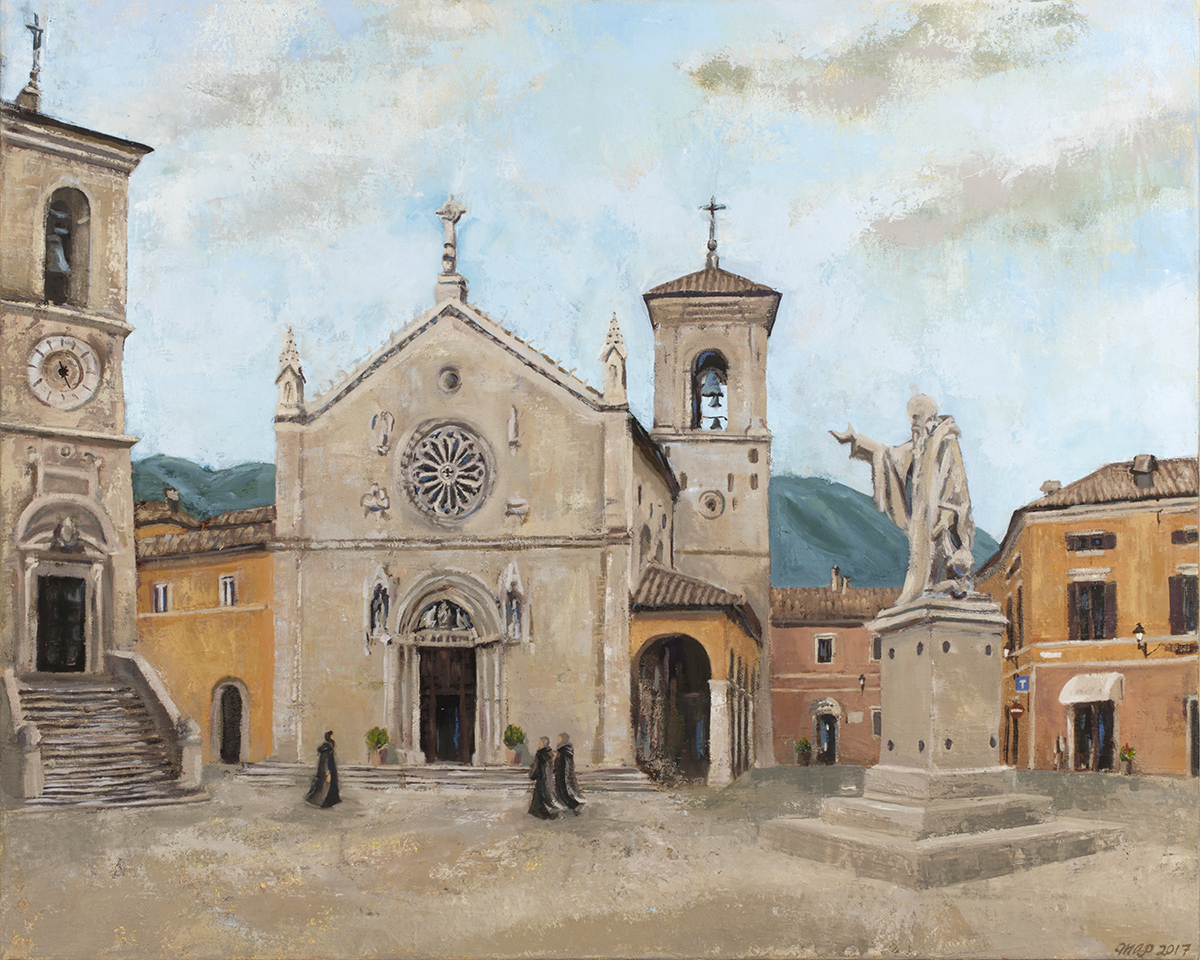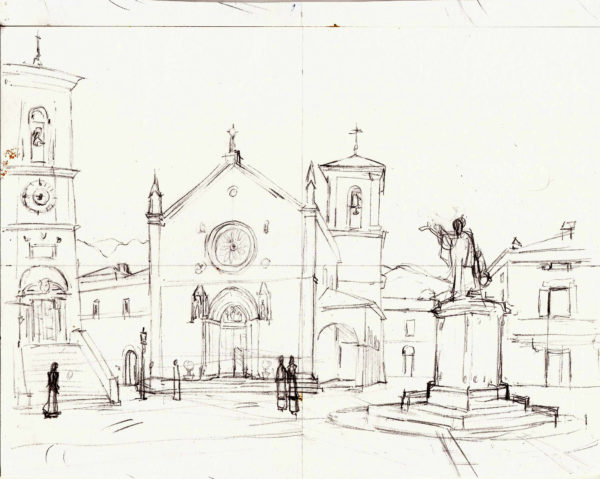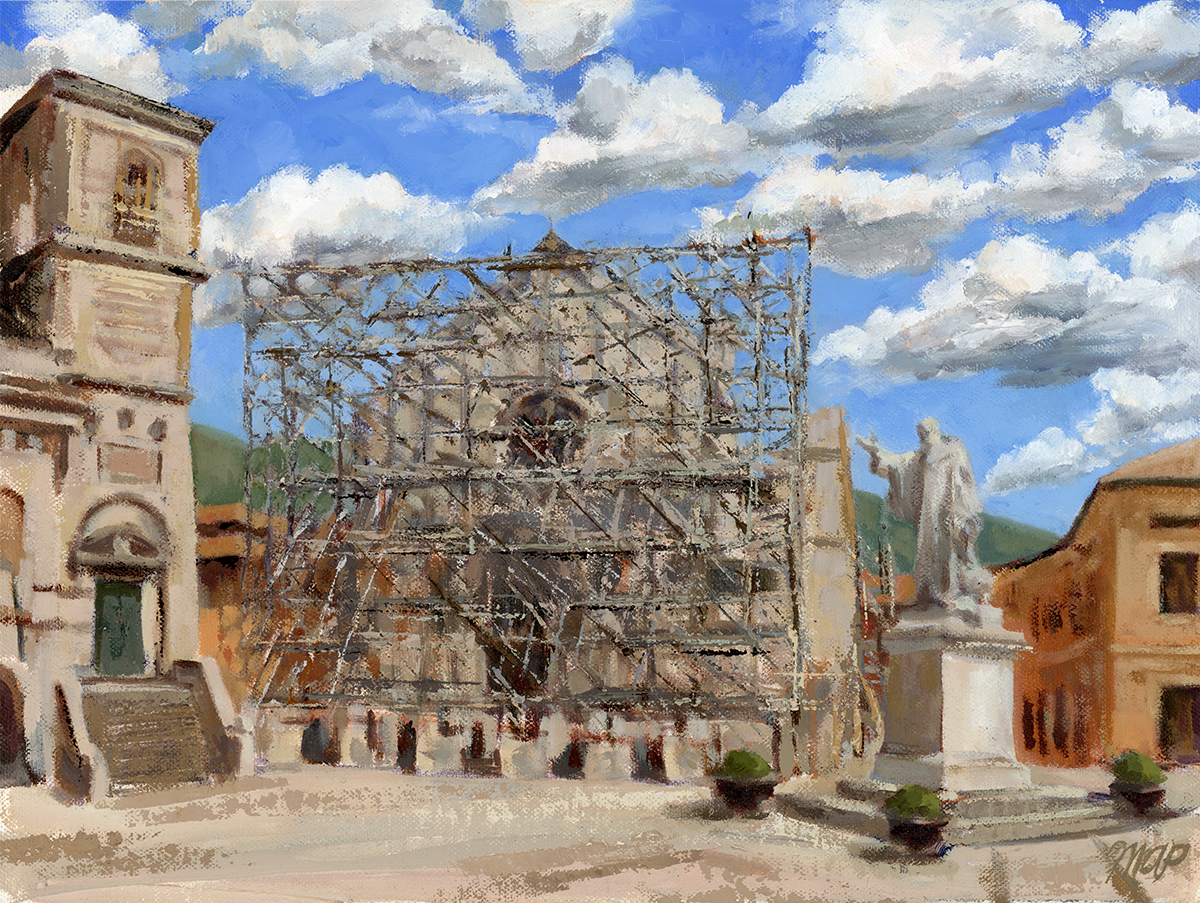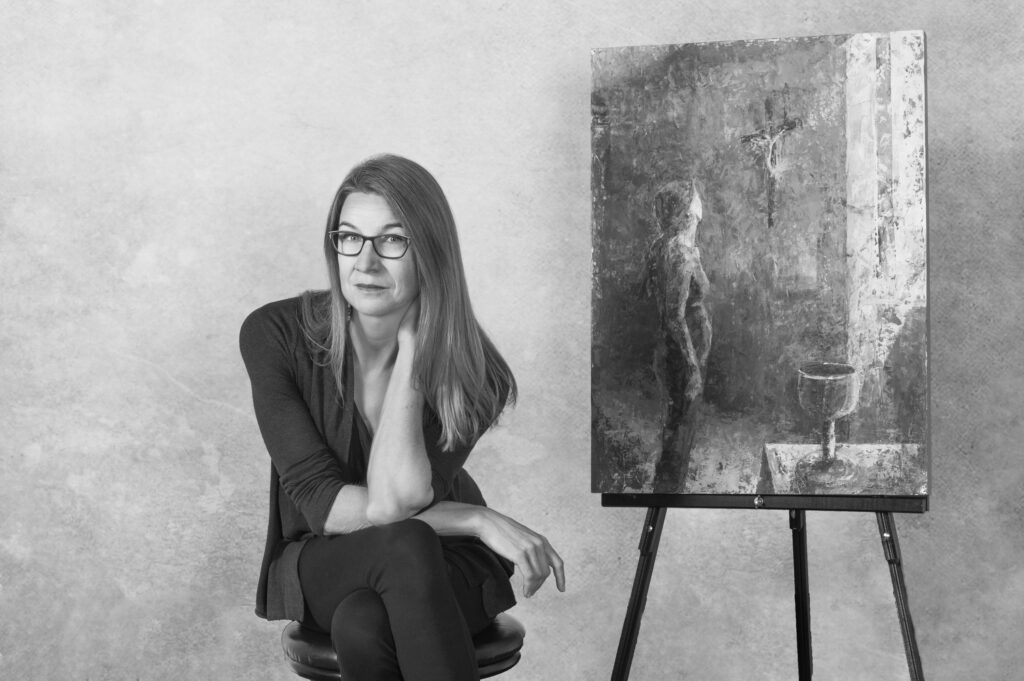

Building A Drawing
I painted the Basilica of St Benedict of Nursia in 2017. The patron, who is a Benedictine Oblate of the Monks of Norcia has led many pilgrimages to this place. She wanted to remember it as it was before the destructive earthquake. After sharing the process of creating the drawing for that painting, another collector purchased the drawing study. As my career matures, I find joy in developing relationships with long-time collectors.
I wasn’t expecting to sell the study for the painting. The drawing had smudges of erasures and a blotch of oil paint on it. I had cut off a strip from the bottom and taped it to the top after realizing that the entire composition was too high on the canvas. The drawing demonstrates in its materiality the messiness, toil and creative process that the painting underwent.
The collector who purchased the drawing, a Baptist pastor from Vermont, wanted it for this reason, that it held the evidence of the process, that it was a WORKING drawing. Since I donate a portion of all Norcia-related works I sell to the Monks of Norcia Foundation, the drawing also works to build the monks new/old monastery outside the city walls. The cruciform grid lines I had drawn to help me keep everything in proportion reminded him of the scaffolding holding up that remains of the basilica and monastery.

Study of the Basilica of Saint Benedict of Nursia © Michelle Arnold Paine. Private Collection.
Building a Drawing
He says: “What I love about the working drawing is that it’s part of the “building” process of the painting, that was commissioned to remember a Church that is being rebuilt. And since some of the proceeds go to that effort it becomes part of the work as well. With the grid marks, it echos the scaffolding (the marks function in a similar way, temporary construction to aid relatively permanent restorative work) in the photo of the church being rebuilt. And it has a subtle cruciformity that I love in paintings, and of course the Cross is a similar temporary structure that aids in a permanent work. All told, it’s a beautiful and deep piece of art in and of itself.”

Basilica of Benedict of Nursia Under Scaffolding
Following his purchase of this study of the pre-earthquake Basilica of Norcia, the pastor has commissioned another painting. This new painting depicts the Basilica of Saint Benedict of Nursia in its current partially-ruined state, after the earthquakes, enveloped in scaffolding. Fragile. Waiting. Precarious. It has become more poignant in recent months as I increasingly feel our fragility as individuals, a church, a nation. The Latin word for scaffolding or staging is “pulpitum.” Appropriate, then, that the patron for this painting is a pastor, who preaches each Sunday from a pulpit. The metaphor of re-building, of girding up, resonates strongly with him as a pastor. He is strongly devoted to Saint Benedict, whose Rule is an under-pinning of the Western vision for Christian community life. The scaffolding, too, is precarious to climb and construct, and yet vital for support.


Re-Building the Church (literal and figurative)
I address the metaphor of rebuilding in more depth in another blog post. Sometimes it seems the Church struggles to survive in a world tending more towards destruction than construction. As in Haggai 1 and 2, God calls us to work to rebuild his Church, to not let it sit in ruin. The Monks of Norcia have been re-building the Church metaphorically in their work of prayer as Benedictines for many years before the earthquake. The church on earth is a continual work in progress. Though the battle is won in heaven, the work on earth is not yet finished. The scaffolding reminds us of the mission and faith that we need to work towards.

Nursia:Pulpitum Study. Pencil on paper. ©Michelle Arnold Paine 2020 Private Collection
I created the drawing first, to plan the painting, and to begin to address the problem of the scaffolding. So many lines! How would I ever get so much complexity into a small 9×12 painting? Once the painting was well underway, the work of the drawing was mostly done. As with the first drawing of the Basilica, this drawing evolved to serve the painting. I returned to it and worked further when I determined that I needed to create a more direct light source in the painting. The photos I had taken in person in 2017 were all on a very gray day and there was too little contrast. After determining the angle at which the facade would be in direct sun, I went back to the drawing to develop the “light logic” of that angle of sunlight, adding shadows the left-facing planes of the buildings and structures.
Before and After/After and Before
Once completed, the two drawings will sit side-by-side in the pastor’s office. Before and After … Or is it After and Before?




